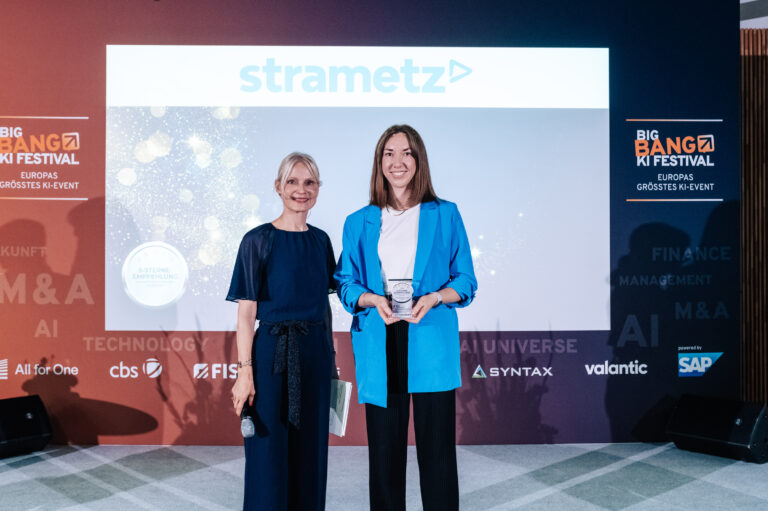The Next Normal
What does the future of organizations and work environments look like? Is the current Corona crisis an inhibiting or driving factor for the issues of leadership and structure? What will it be like, the Next Normal? These are the questions that the current study “The Next Normal – Perspectives on the Future of Organizing”, which was produced in cooperation between the organizational consultancy Metaplan and Haufe, attempts to get to the bottom of. It is based on 100 qualitative expert interviews with managers from the DACH region.
The study shows that organizational areas of tension are revealed under the pressure caused by the crisis. In the following, the identified areas of tension will be used to answer the research questions below:
How do organizations position themselves?
This issue involves areas of tension in deciding how decisions should be made in the future. Within the scope of the topic area “Operating Systems“, the field of tension between decentralized and centralized control is brought into focus. The experts’ conclusion: A stable operating system encompasses both poles equally. Centralization, with the aim of reducing uncertainties and controlling decisions across divisions, and decentralization, which allows fast and flexible ad-hoc decisions, should therefore be seen as a core task of managers. On the way to the Next Normal, organizations must question which adaptations in the operating system continue to be valid and which should be discarded together with the crisis mode. The topic area “decision-making” describes the tension between the attempt to avoid risky decisions and the necessity to make decisions despite great uncertainty and to accept possible risks. Right now is an opportunity to realign the organization for the post-crisis period. The topic area “Hierarchy and Leadership” encompasses the area of tension between the increasing demands on leadership as well as the fact that the usual levers for leadership have changed. Those who have found their own irrelevance in the crisis, because subordinate employees have worked smoothly without hierarchical impetus, must be prepared for organizational change. Whether an organization tends to renew or flatten its hierarchy will have different implications for its Next Normal.
How do you collaborate?
The crisis determines not only the fundamental constitution of the organization, but also the cooperation between its actors. The increasing digital exchange thus makes the subject area of “informality” visible. Since formality has been suspended in favor of speed and flexibility in the current crisis mode until further notice, organizations on the path to the Next Normal must assess the extent to which the currently suspended formal processes will be re-established. Due to the increasing need for IT support and the formation of task forces, new departments and people have become relevant in organizations. The shift in “power structures” will thus strongly influence the Next Normal in organizations. Since old claims to power will be revived when the crisis mode ends, the relationship between old and new power structures must be balanced. In addition to power shifts, the issue of “relationships” is also a source of conflict within the organization. As both personal interests are currently being put on the back burner for the good of the organization and latent conflicts are being ignited, opportunities are opening up for managers to establish new constellations of relationships and forms of cooperation in the Next Normal, as well as to resolve conflicting goals of which they may not have been aware before. The rise of “digital collaboration” also poses major challenges for many managers. The study identifies two effects in this regard: Disenchantment and stress. Due to the impact of the Covid-19 crisis, organizations have been pressure-fueled with digital collaboration in a short period of time. Due to the intensity of this development, all interview partners of the study therefore agree that there will be fewer presence meetings in the future. The crisis can thus be seen as a test for digital collaboration in the Next Normal.
How is value created?
Because the crisis does not only affect organizations, the development of “ecosystems” – more precisely, customers, suppliers and competitors – is also of great importance. As the current situation eliminates any form of routine, new business models can be developed. The uncertainty of others in the ecosystem creates freedom for experimentation. In this respect, the topic of “innovation” plays a particularly important role for value generation. New ideas, processes and forms of cooperation emerge. Many of them are usable for crisis mode, but show clear weaknesses in quiet times. The task for organizations is to decide which of the innovations will endure in the Next Normal.
How do organizations present themselves?
Many of the organizations surveyed report that both their employees’ need for information and communication and their expectation for the most accurate answers possible have increased during the crisis. The search for “purpose” is therefore not heard in the crisis. What remains is what drives every organization and person: Maintaining value creation and thus securing the basis of existence. The subject area of “New Work” also faces a similar dilemma. What in the past in the New Work movement pursued the purpose of a better working world is in the crisis broken down into individual tools, the use of which is to ensure the survival of the company. On the way to the Next Normal, organizations will therefore have to ask themselves which concrete actions need to be taken in the direction of the New Work.
For further interesting insights please have a look at our studies











